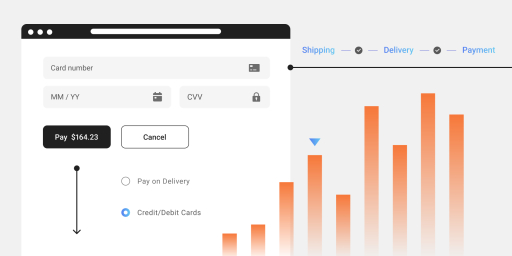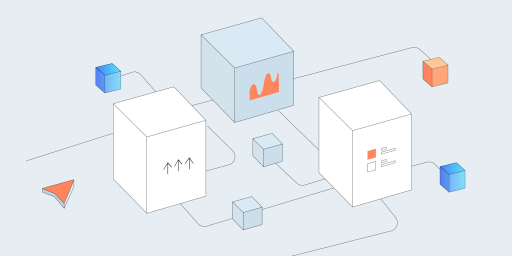Test coverage is a metric that specifies the quantity and quality of testing performed. Simply said — it’s what is tested and how much code, platforms, and different user scenarios are checked.
So, it’s a significant indicator in software testing in terms of effectiveness and quality. Unlike code coverage that concerns the code only, test coverage involves every requirement testing at least once. It is the responsibility of the professional QA specialists, ruled by various documents such as Software Requirements Specification, Functional Requirements Specification, User Requirement Specification, and more.
Thanks to test coverage, the specialists can spot the areas in a product that are not validated or missing and create the corresponding tests to improve the situation. For example, if we have 15 requirements, create 150 tests, and 120 tests are executed, the test coverage is 80%.
Now, knowing how to calculate test coverage, please note that 100% coverage does not mean 100% testing! It is just a metric for measuring the effectiveness of overall testing efforts.
Why Is Testing Coverage Important?
In the modern digital world, every aspect of our life is software-dependent. Lack of testing can result in disastrous situations. In May 2015, for instance, there was a catastrophe in Seville during an Airbus test flight because of software failure. 4 people died and 2 crew members were injured. As a result, Airbus urgently ruled to check its A400M aircraft. So, test coverage helps to track the quality of software tests and to cover the areas not yet validated, helping to avoid problems and even catastrophes.
What Are the Test Coverage Techniques?
Multifaceted techniques cover variable aspects of the software product developed. Let’s look into each of them in more detail.
Product coverage
Product coverage means testing a software solution from a product perspective to check certain areas of the product. It’s concerned with the performance of a product across a wide range of scenarios. It’s not only about functionality, but also about how it might be utilized. So, in this case, a tester treats the software as a product, not as a bundle of code and features.
The product coverage is often tested by taking software features to their extremes. In a new product, it’s vital to explore the most important elements in-depth.
To improve the product coverage, it’s reasonable to:
- Prioritize requirements,
- Prepare a checklist for them, and
- Implement effective test automation,
which will definitely result in reducing the QA time.
Requirements coverage
The paramount essence of every software product is meeting the requirements of its users. That’s why requirement coverage should be a top priority. This technique helps assess if the required features exist and function properly. If a newly created product cannot meet the users’ requirements, it turns out to be useless.
Risk coverage
The risk coverage technique allows assessing all the software-related risks and meticulously testing them. To make sure your app is risk-covered, make a list of all the potential risks and problems they can cause.
While testing an eCommerce platform, make sure you have not only verified every feature but also considered the possible massive number of users visiting the site simultaneously because of some sale, for instance.
Paying special attention to the risks with high impact and high probability is out of the question. It’s also advisable to check the unlikely scenarios with high impact. Likely scenarios with low impact can be tested if there is time and resources, while checking unlikely scenarios with low impact can even be skipped.
Compatibility coverage
There are over 9,000 devices, 21 operating systems, and 8 browsers nowadays, so compatibility coverage is a mammoth, yet essential task to be performed. To avoid hampering your software user experience, ensure the product works across all browsers, operating systems, and devices and check how it operates with different hardware configurations and other software as well.
More than that, it’s important to check both Android and iOS platforms and variable network conditions, like Wi-Fi, 3G, 4G, etc.
Boundary value coverage
If your software solution takes certain values within specified boundaries as input, accurately test the boundaries, to be more precise, the boundary and the values immediately below and above it. For a minimum input value of 1, you try also 0 and 2 to minimize the off-by-one bugs in your product.
AI-aided test automation
AI-aided test automation stands out among the other test coverage techniques because it fully relies on automation, while the other methods mentioned above primarily depend on manual processes.
AI-Aided test automation makes use of the specific tools, enabling self-improving test sets and applying machine learning to correct themselves with each execution. Thus, it allows getting a stable suite of tests that keep on continuously self-improving.
What Are Test Coverage Metrics?
Test coverage metrics help to measure and monitor the testing activities applied. One can spot the number of bugs and also estimate the time taken by testing. If you want to maximize the efficiency and enhance the QA process, monitoring certain metrics is a must. It will help answer the following vital questions:
- Is testing realized against the right platforms and environments?
- How much was tested?
- How long does it take to properly test the product?
- How many problems did the team fail to spot?
When choosing the metrics for test coverage, it’s important not only to take care to cover the right scenarios but also to consider the latest OS, browsers, and platforms releases, as well as phones and devices most widely used by your audience.
Not less important are the metrics beyond devices and platform, those concerning user conditions, like:
- Phone calls interruption,
- Memory consumption,
- Networks switching,
- Processes running in the background,
- Low battery and much more.
The test coverage metrics that top the list are:
- The percentage of test execution coverage.
- Faults per platform.
- Requirements coverage.
- The number of test cases by requirement.
- Defects spot per requirement.
- Bugs found per functional area.
- Test case performance in finding defects.
What Are the Advantages of Test Coverage?
As with any development process, test coverage is aimed at increasing the efficiency of the product and has advantages that should be mentioned:
- Test coverage reports on codebase areas not covered by the test cases due.
- It facilitates the creation of new test cases to ensure maximum test coverage.
- Test coverage helps eliminate redundant test cases.
- One can spot test cases or areas useless for the current project or its stage.
- It helps prevent defect leakage.
- It helps indirectly measure the quality of the product.
To draw a line, there are plenty of reasons to care about test coverage for your product, but the primary one is to enhance your ROI. Test coverage prevents you from wasting resources on eliminating defects after the product release and benefits your business in the long run.



